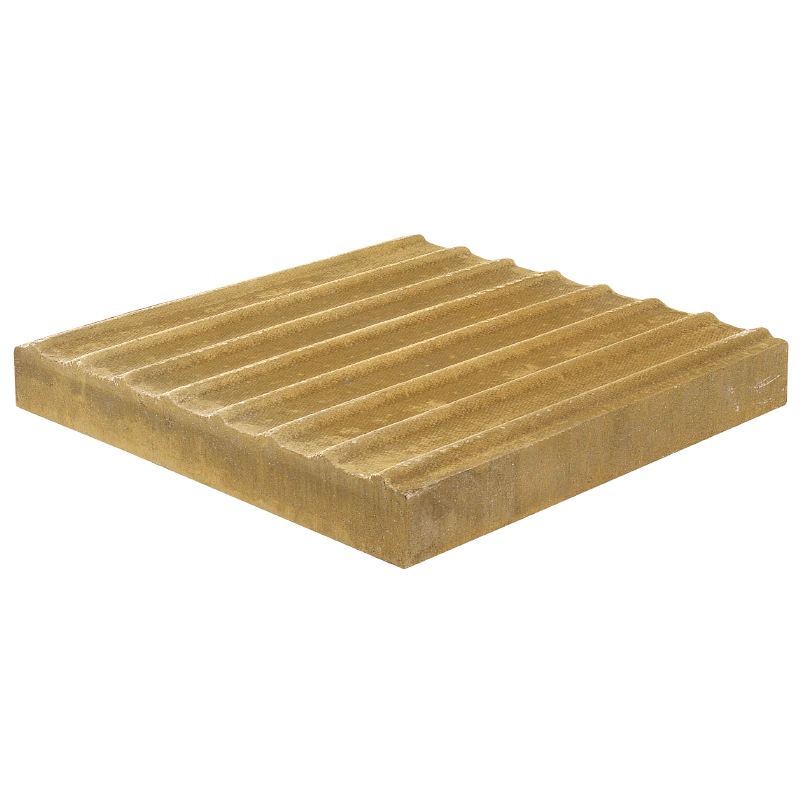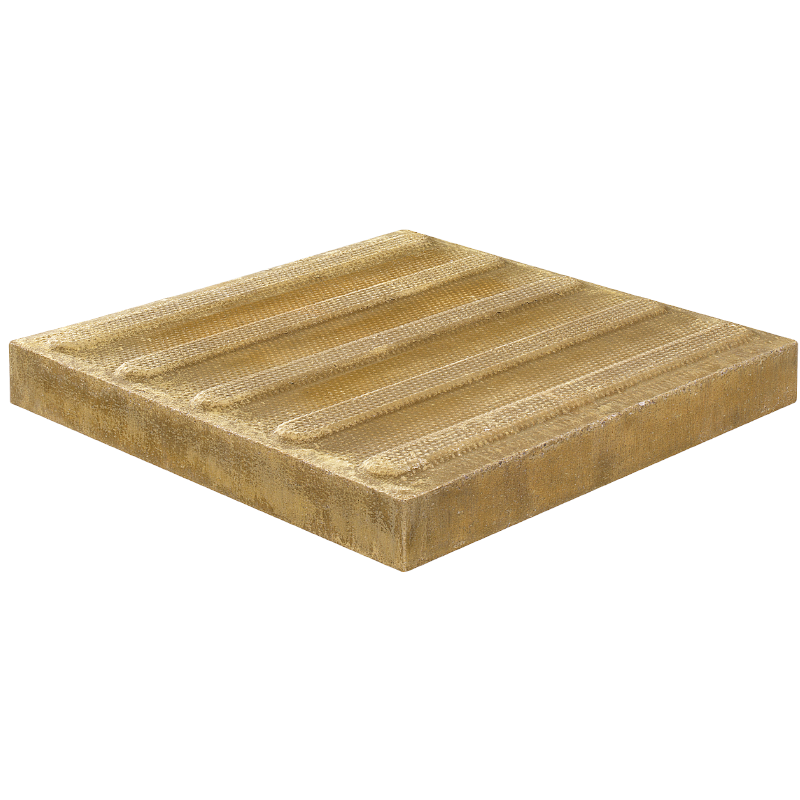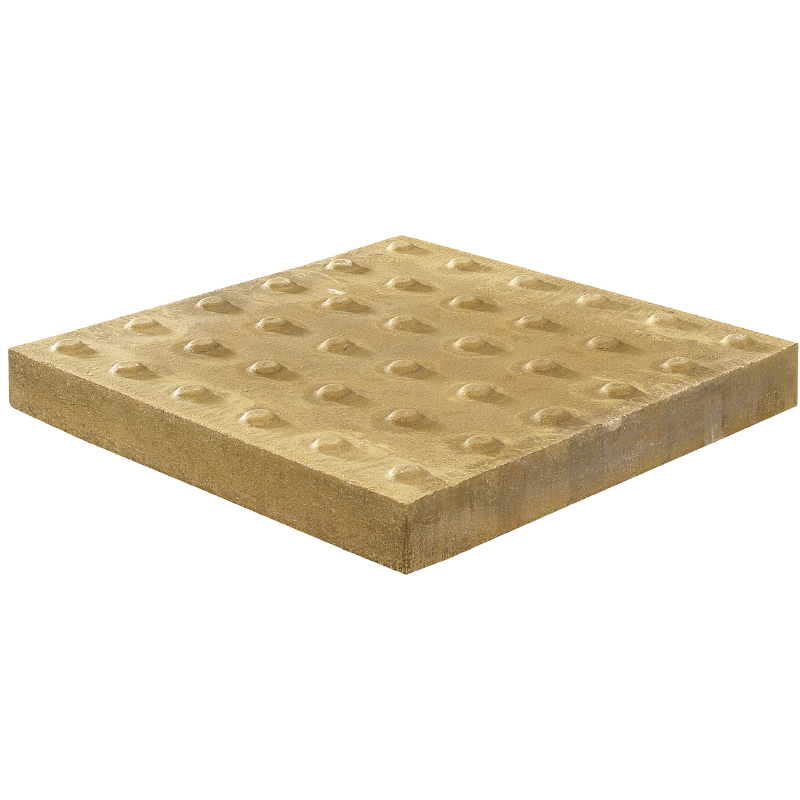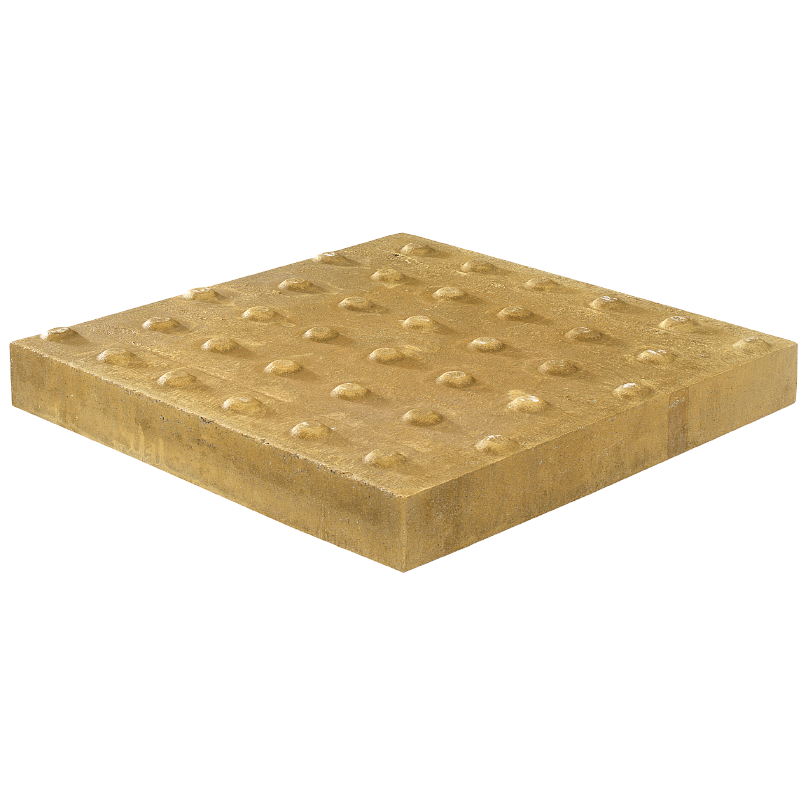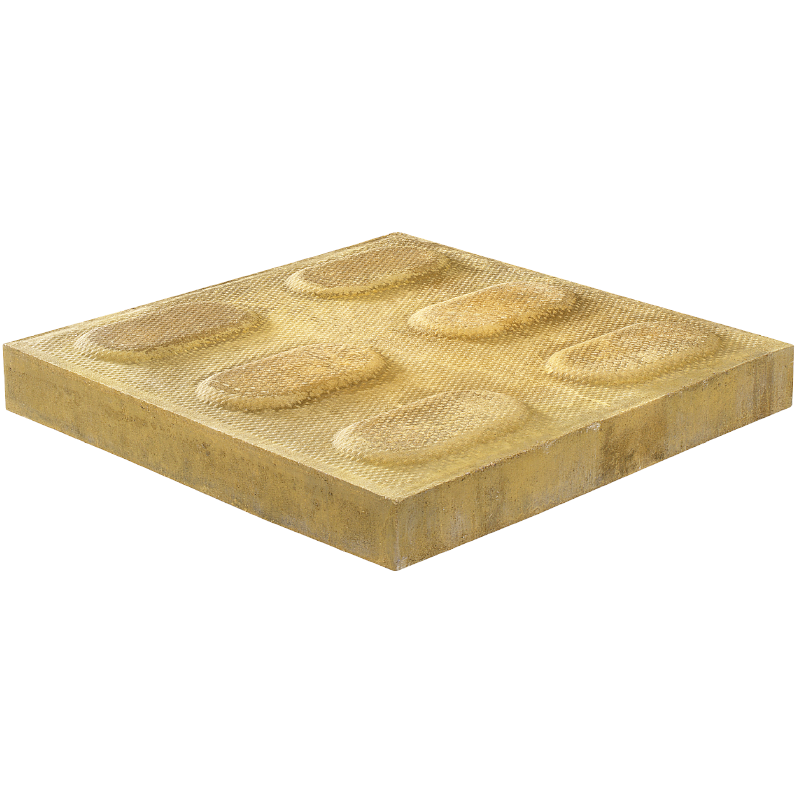Corduroy pattern
The corduroy pattern is made up of 8 bars with rounded ends, equally spaced, in a 400mm x 400mm boundary. The bars themselves are 400mm long x 20mm wide x 6mm high.
The pattern is used to warn of hazards and to instruct the pedestrian to alter their gait for obstacles including steps, level crossings, and at ramps leading to on-street tram and Light Rapid Transit (LRT) platforms.

